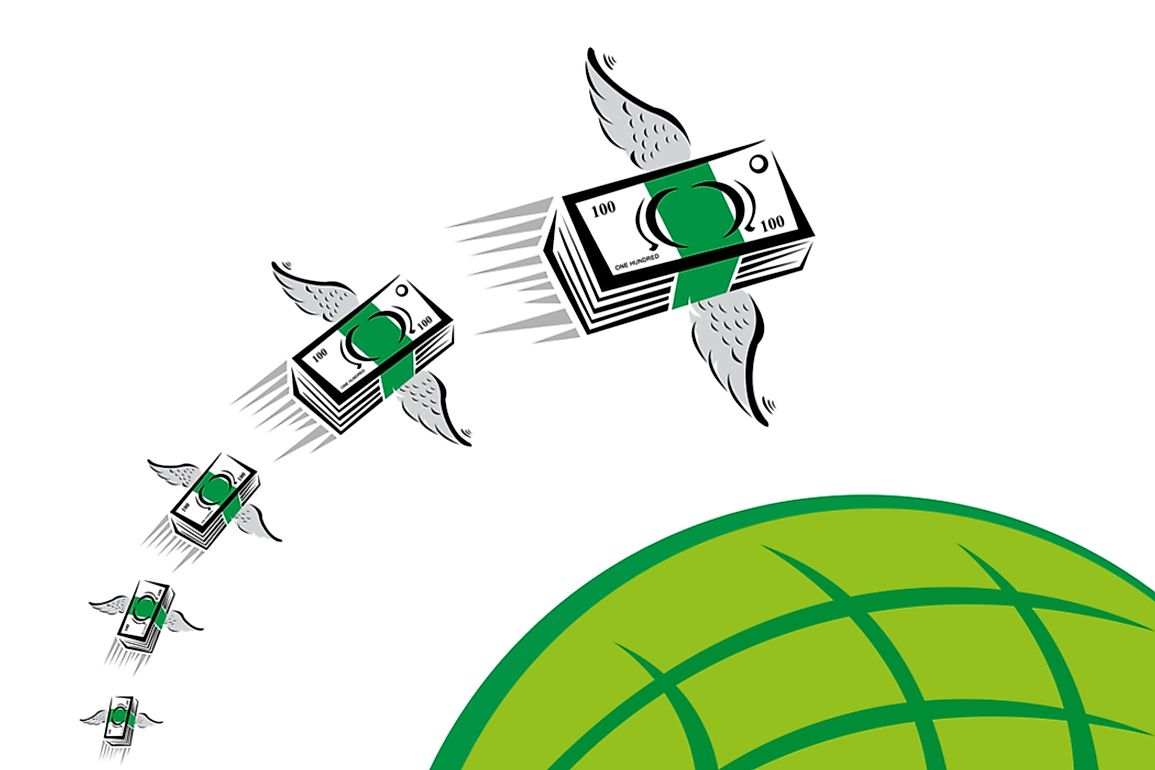Countries Where Remittances Received Accounts For the Most of the GDP

Remittance is the money a person working abroad sends to their home country while gross domestic product (GDP) is the total value of output in a country within a period. Remittance can be a source of GDP growth by increasing individual household earnings, but it is not directly added to the GDP of a country, because it does not represent good and services produced in a country. Remittance contributes to the economy of third world countries as it gives countries the ability to fund development without the financial burden of borrowing from international banks. According to the World Bank, the amount of remittances to developing countries has dropped by 2.4% from $440 billion in 2015 to $429 billion in 2016. Remittance at times accounts to most of a country’s GDP.
Countries Where Remittances Received Accounts For the Most of the GDP
Nepal
Nepal tops the countries that rely largely on remittances. 31.2% of the GDP comes from remittances. Nepal’s economy in the last two decades has been largely dependent on remittances. Nepal has a population of around 29 million with at least 10% of the population working abroad. Most of the migrant workers are in the Middle East with the rest strewn across the world. Remittances in the financial year 2012 -2013 amounted to $3.5 billion and this was an increase from $50 million in the 1990’s, an amount that is equivalent to ¼ of the country’s GDP.
Kyrgyzstan
Kyrgyzstan remittances contributed to 30.4% of the country’s GDP. The country has a GDP of approximately $22 billion. Kyrgyzstan is a small country in South East Asia with a population of around 6 million. About 10 to 15% of the population is currently working abroad with most of them working in Russia.
Haiti
Haiti has a GDP of $8.02 billion and remittance accounting to 29.4% of the GDP. Haiti is located in the Caribbean islands and has a total population of 10.85 million. Majority of the population live in abject poverty. Remittances have contributed much to the Haitian economy because Haiti has had several natural disasters in the form of floods and other natural disasters. Most of the Haiti migrants work in the US and Europe. Haiti receives approximately $1.5 billion in remittances every year, which is attributed to about 1 million people working in diaspora. It is estimated that the figures could even be higher.
Tajikistan
Tajikistan is a former Soviet Union state and is Central Asia’s poorest country. Remittances make up 26.9% of their GDP. Most of the migrants work in Russia thus most of the remittances come from Russia. Tajikistan received $3.7 billion in 2012 in remittances, which was more than ½ of the country’s GDP in 2012. In 2013 remittances comprised of 49% of the country’s GDP. However, the figures have been steadily falling mainly because of the economic downturn in countries where citizens of Tajikistan work.
Impact on a Country’s Economy
Remittance amounting to a high percentage of a country’s GDP means that a country is has a high inflow of foreign currencies, and this can be an advantage or disadvantage. The country may have a bit of foreign revenue for development though it can also lead to a country’s dependence on foreign revenue instead of the country creating avenues for a local sustainable economy. It could also imply that most skilled workers have left the country and therefore worsening the distribution of income between the rich and the poor countries.
Countries Where Remittances Received Accounts For the Most of the GDP
| Rank | Country | Percentage of GDP From Remittances |
|---|---|---|
| 1 | Nepal | 31.2 |
| 2 | Kyrgyzstan | 30.4 |
| 3 | Haiti | 29.4 |
| 4 | Tajikistan | 26.9 |
| 5 | Liberia | 26.1 |
| 6 | Moldova | 21.7 |
| 7 | The Gambia | 21.5 |
| 8 | Comoros | 21.2 |
| 9 | Tonga | 20.3 |
| 10 | Honduras | 18.0 |
| 11 | Jamaica | 17.3 |
| 12 | El Salvador | 17.1 |
| 13 | Lebanon | 16.0 |
| 14 | Lesotho | 15.6 |
| 15 | Kosovo | 14.8 |
| 16 | West Bank and Gaza | 14.6 |
| 17 | Marshall Islands | 14.3 |
| 18 | Senegal | 13.7 |
| 19 | Cabo Verde | 13.6 |
| 20 | Armenia | 13.1 |











